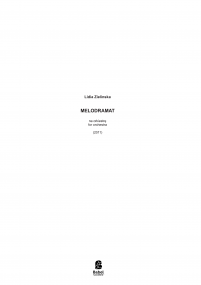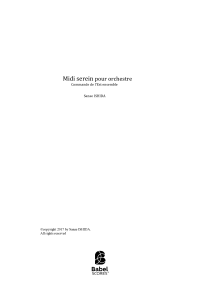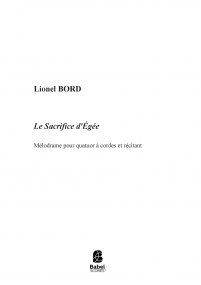Unhörbares Hörbar Machen
17,51 €
Version papier (+14,80 € impression et livraison ). Colissimo7-14 days aprox.
Version numérique (+0,00 €) à télécharger
Chez BabelScores, quand vous achetez une partition, vous pouvez ensuite contacter directement le compositeur ici même !
Caractéristiques
Region
Europe
Estimated Duration
11 - 15min
Date
2013
ISMN : 979-0-2325-1511-3
In Stock
Notes sur cette pièce
UNHÖRBARES HÖRBAR MACHEN
PART IIt’s a platitude to describe an orchestra as an “instrument”, although this is certainly one way of looking at it. At the opposite extreme, the orchestra of Unhörbares hörbar machen – part I –physically consists of 69 instruments and it was this distance that initially interested me. The piece procedurally develops from solo to tutti “behaviours” and the orchestration technique I developed for the piece is not distinct from the musical material itself or the works poetic idea.How to describe the “poetic” idea which is interwoven with these processes? As the title implies, one of the ideas has to do with the underlying material and the works structure that is “based” on Claude Debussy’s last orchestral oeuvre (poème dansé), Jeux. OR, more correctly it’s rather my reading and understanding of the materials and structures used in Jeux.The search to understand the material is expressed in terms of the result; the process by which I try to find my way around the multidimensional musical space I have composed, is what you hear when the music is played.Unhörbares hörbar machen – part I was commissioned by NSO with support from Ann-Sophie Mutter foundation and premiered in December 2013.
Ajouter à une playlist
- Identifiez-vous pour créer une liste
UNHÖRBARES HÖRBAR MACHEN
PART IIt’s a platitude to describe an orchestra as an “instrument”, although this is certainly one way of looking at it. At the opposite extreme, the orchestra of Unhörbares hörbar machen – part I –physically consists of 69 instruments and it was this distance that initially interested me. The piece procedurally develops from solo to tutti “behaviours” and the orchestration technique I developed for the piece is not distinct from the musical material itself or the works poetic idea.How to describe the “poetic” idea which is interwoven with these processes? As the title implies, one of the ideas has to do with the underlying material and the works structure that is “based” on Claude Debussy’s last orchestral oeuvre (poème dansé), Jeux. OR, more correctly it’s rather my reading and understanding of the materials and structures used in Jeux.The search to understand the material is expressed in terms of the result; the process by which I try to find my way around the multidimensional musical space I have composed, is what you hear when the music is played.Unhörbares hörbar machen – part I was commissioned by NSO with support from Ann-Sophie Mutter foundation and premiered in December 2013.
Instrumentation
flute (3)|oboe (2)|English Horn|Clarinet (2)|Clarinet|Bass clarinet|bassoon (3)|Horn (French Horn) (4)|Trumpet (3)|trombone (3)|bass tuba|Percussions (4)|harp|Violin I|Violin II|Viola (8)|Cello (6)|Double bass (5)|
Recording
Norrköping Symphony Orchestra/Michael Francis
Score Details
Format - A3 / tabloid
Pages - 28
Pages - 28







